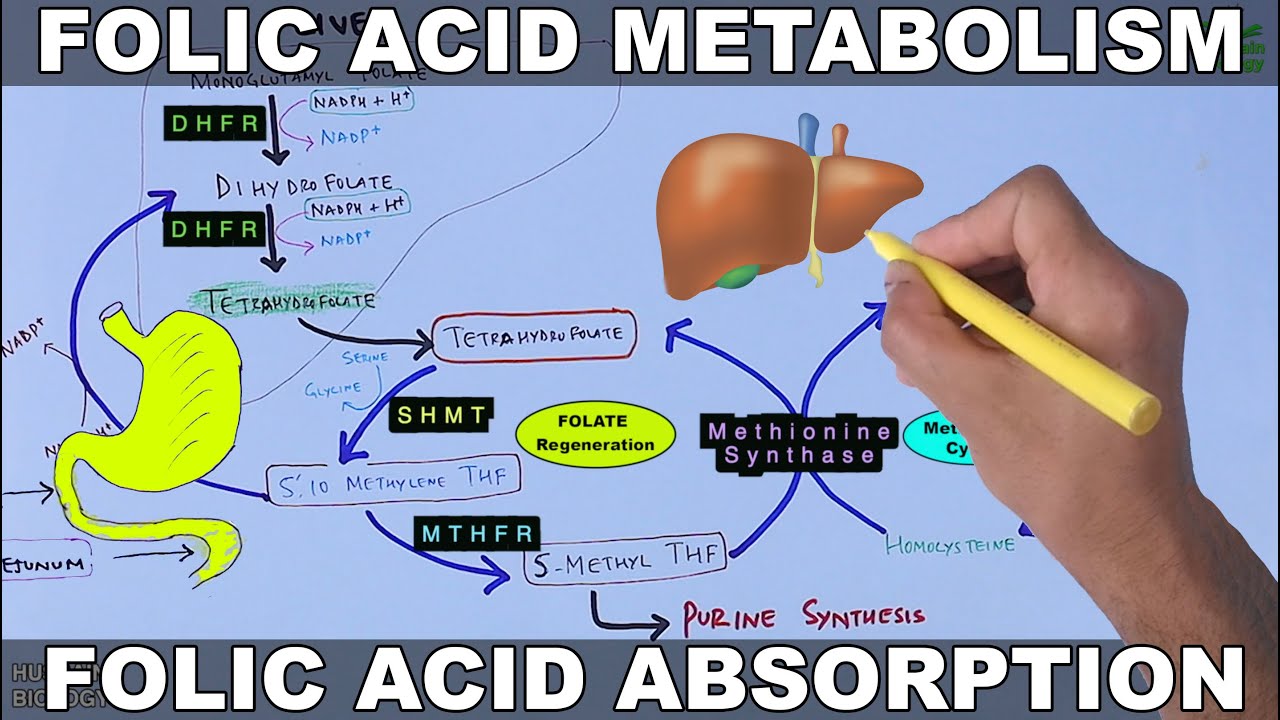Vitamin B5 (Pantothenic Acid) 🥬🍗🍳
Summary
TLDRIn this educational video, the host delves into the world of vitamin B5, also known as pantothenic acid, highlighting its crucial role in metabolism as a coenzyme A provider. They discuss its rarity in deficiency and toxicity, its presence in all foods, and its significance in biochemical processes like fatty acid synthesis and oxidation. The host also humorously addresses the confusing nomenclature of vitamins on supplement bottles and emphasizes the importance of understanding the functions of vitamins for effective health and medicine.
Takeaways
- 💊 Vitamin B5, also known as pantothenic acid, plays a crucial role in the production of coenzyme A (CoA), which is vital for various metabolic processes.
- 💧 Vitamin B5 is water-soluble, making toxicity unlikely as excess amounts are excreted by the kidneys.
- 🥬 Pantothenic acid is found in a wide variety of foods, making deficiency extremely rare.
- 🔄 Vitamin B5 is involved in the metabolism of carbohydrates, proteins, and lipids, contributing to energy production.
- 🔋 Coenzyme A, derived from vitamin B5, is essential for the conversion of pyruvate into acetyl CoA, a step necessary for entering the TCA cycle.
- 🚫 The script humorously criticizes the inconsistent naming and labeling of vitamins on supplements, advocating for a more logical alphabetical system.
- 🔬 Roger Williams, an American chemist, is credited with the discovery of several vitamins, including vitamin B5 and vitamin B6, and the isolation of folic acid.
- 🌿 Vitamin B5 is synthesized by the human microbiome, further reducing the likelihood of deficiency.
- 🔄 Coenzyme A is central to both fatty acid synthesis and oxidation, processes regulated by insulin and glucagon.
- 💉 Symptoms of experimental pantothenic acid deficiency in animals include fatigue, growth issues, and dermatitis, but these symptoms have not been proven in humans.
- 📚 The script is part of a series educating on biochemistry, specifically focusing on vitamin B5 in this instance.
Q & A
What is Vitamin B5 also known as?
-Vitamin B5 is also known as pantothenic acid.
Why is toxicity from Vitamin B5 unlikely?
-Toxicity from Vitamin B5 is unlikely because it is a water-soluble vitamin, and any excessive amount is excreted by the kidneys.
What are the functions of Coenzyme A (CoA)?
-Coenzyme A serves as a cofactor for enzymes and is involved in various biochemical reactions, including the conversion of pyruvate into acetyl CoA, fatty acid synthesis, and fatty acid oxidation.
What is the role of Vitamin B5 in the Krebs cycle?
-Vitamin B5 helps in the conversion of pyruvate into acetyl CoA, which is a necessary step for pyruvate to enter the Krebs cycle and produce energy.
Why is Vitamin B5 important for fatty acid metabolism?
-Vitamin B5 is crucial for fatty acid metabolism because it is needed to form CoA, which is required for both fatty acid synthesis and oxidation.
What does the term 'pantothenic' mean, and why is it relevant to Vitamin B5?
-The term 'pantothenic' means 'from everywhere,' reflecting that Vitamin B5 can be found in nearly every food source. It is relevant because it indicates the widespread availability of this vitamin in various foods.
What are the symptoms of pantothenic acid deficiency in experimental animals?
-In experimental animals, deficiency in pantothenic acid can lead to fatigue, growth issues, graying hair, dermatitis, and diarrhea.
Who discovered Vitamin B5 and what other contributions did he make to the field of chemistry?
-Roger Williams discovered Vitamin B5. He also discovered Vitamin B6 (pyridoxine), lipoic acid, and folic acid. He isolated and named folic acid and identified biotin's role in preventing egg white injury.
How does Vitamin B5 contribute to the synthesis of fatty acids?
-Vitamin B5 contributes to fatty acid synthesis by providing CoA, which is necessary for the formation of malonyl CoA, a key intermediate in the process.
What is the difference between pantothenic acid and pantothenate?
-Pantothenic acid and pantothenate refer to the same compound, which is Vitamin B5. The term 'pantothenic acid' is often used to describe the free acid form, while 'panthothenate' may refer to its various salt forms.
How does Vitamin B5 assist in the conversion of glucose into energy?
-Vitamin B5 aids in the conversion of glucose into energy by participating in the formation of CoA from pyruvate, which then enters the Krebs cycle to produce ATP.
Outlines

This section is available to paid users only. Please upgrade to access this part.
Upgrade NowMindmap

This section is available to paid users only. Please upgrade to access this part.
Upgrade NowKeywords

This section is available to paid users only. Please upgrade to access this part.
Upgrade NowHighlights

This section is available to paid users only. Please upgrade to access this part.
Upgrade NowTranscripts

This section is available to paid users only. Please upgrade to access this part.
Upgrade NowBrowse More Related Video

Vitamin C 🍋 🍊 & Scurvy | Most COMPREHENSIVE Explanation!

Folic Acid Metabolism | Folate Cycle

Vitamin B7 (Biotin) - Sources - Symptoms of Deficiency vs Excess - Diet and Nutrition Series

12-6 Link Reaction (Cambridge AS A Level Biology, 9700)

Metabolisme Vitamin A

13 Vitamins in 26 Minutes - All Vitamins - Quick Review - Diet & Nutrition - Biochemistry
5.0 / 5 (0 votes)